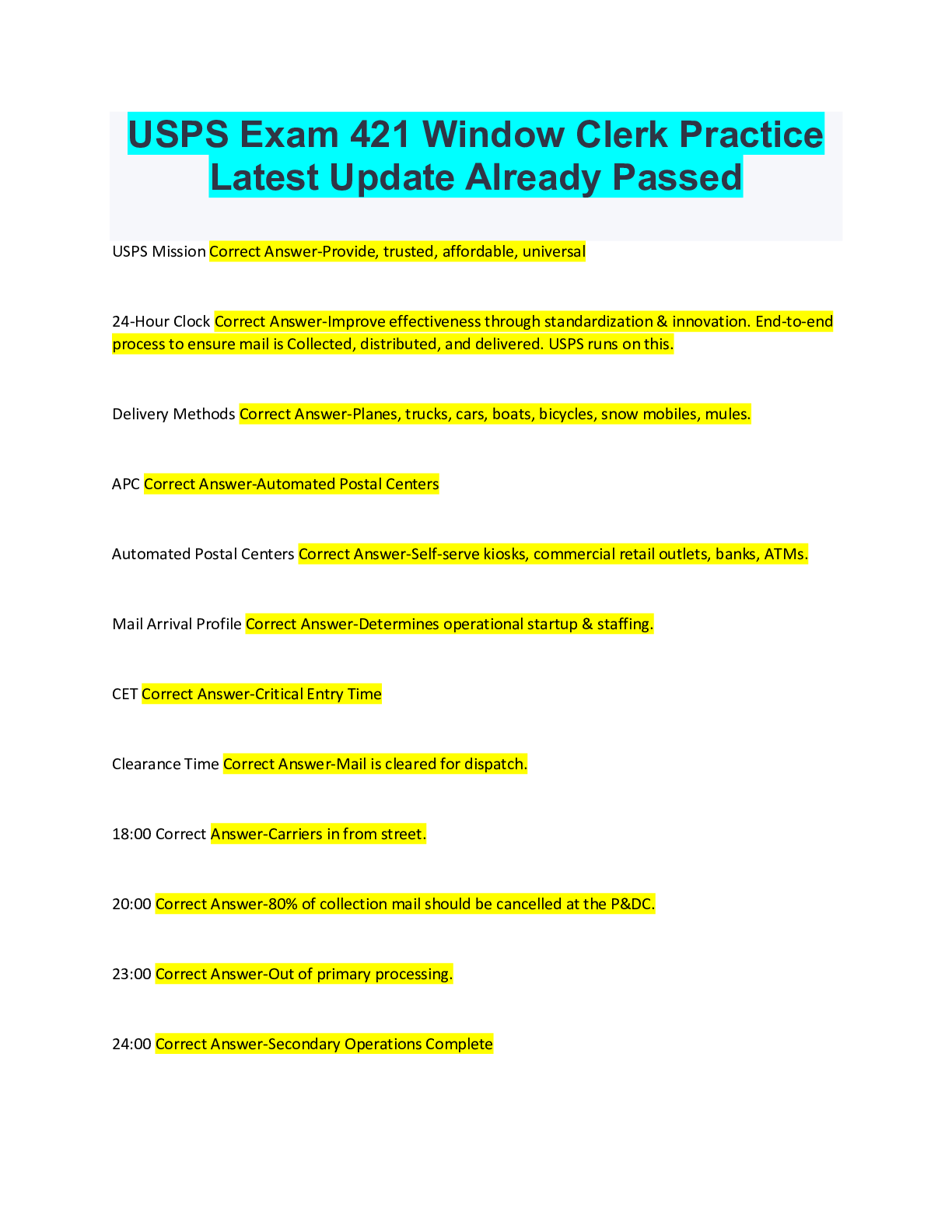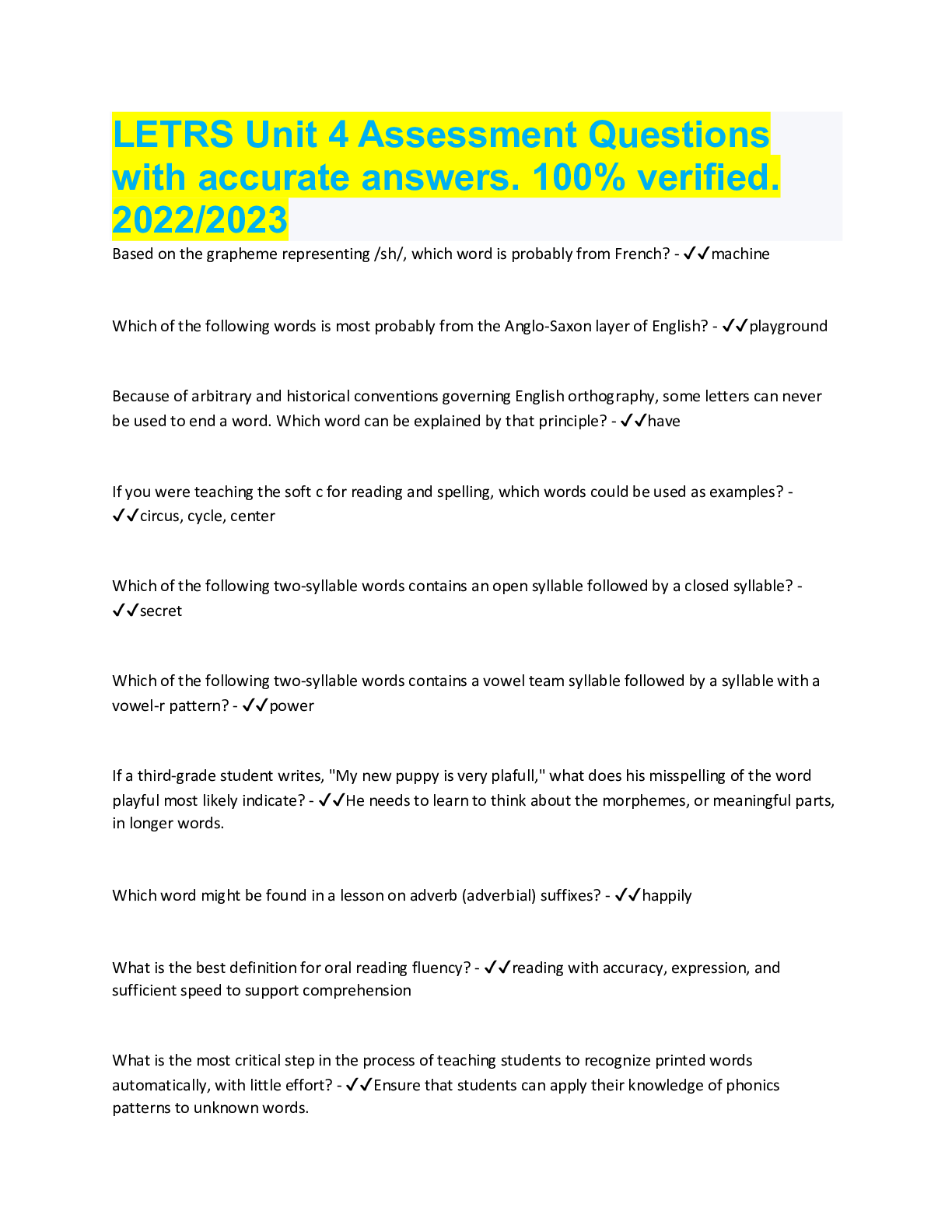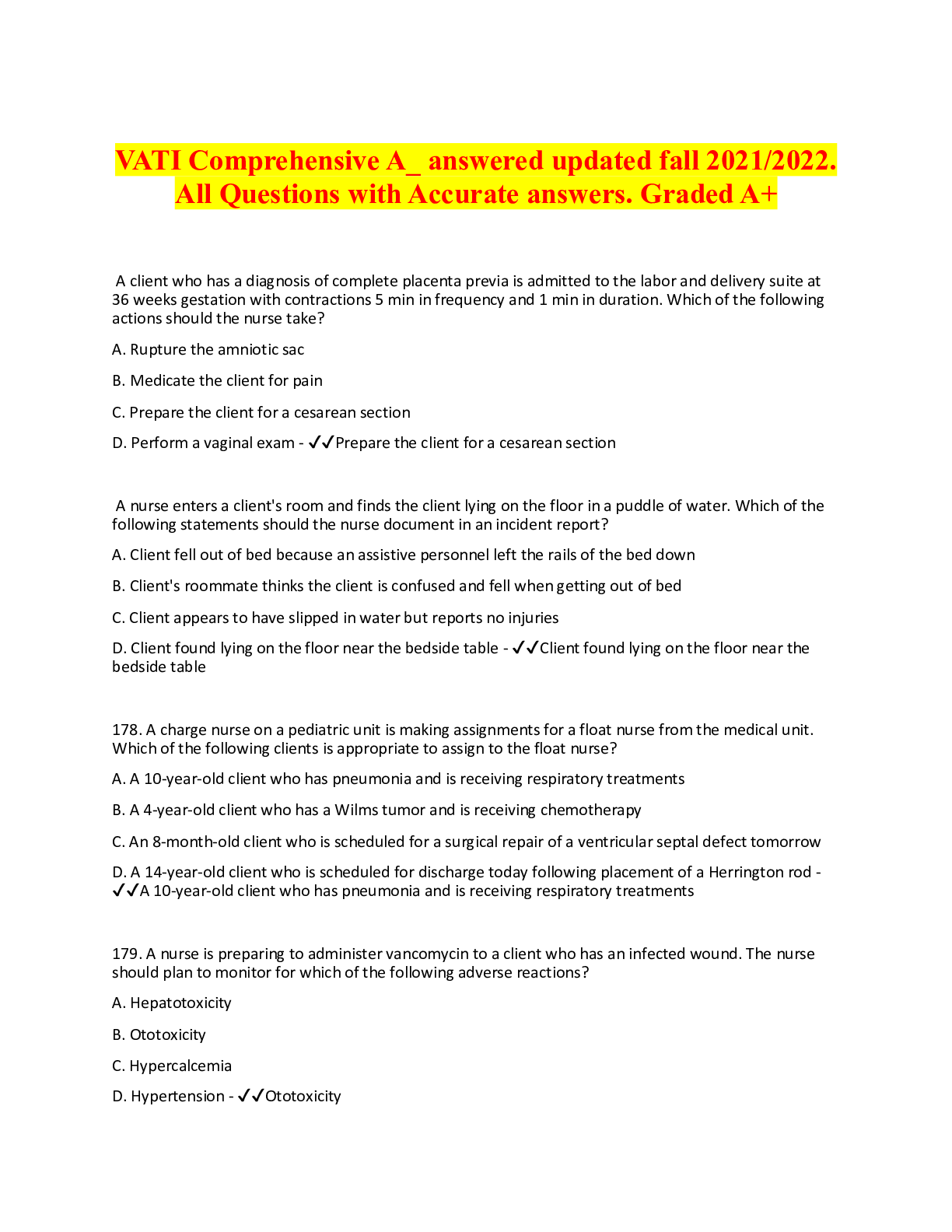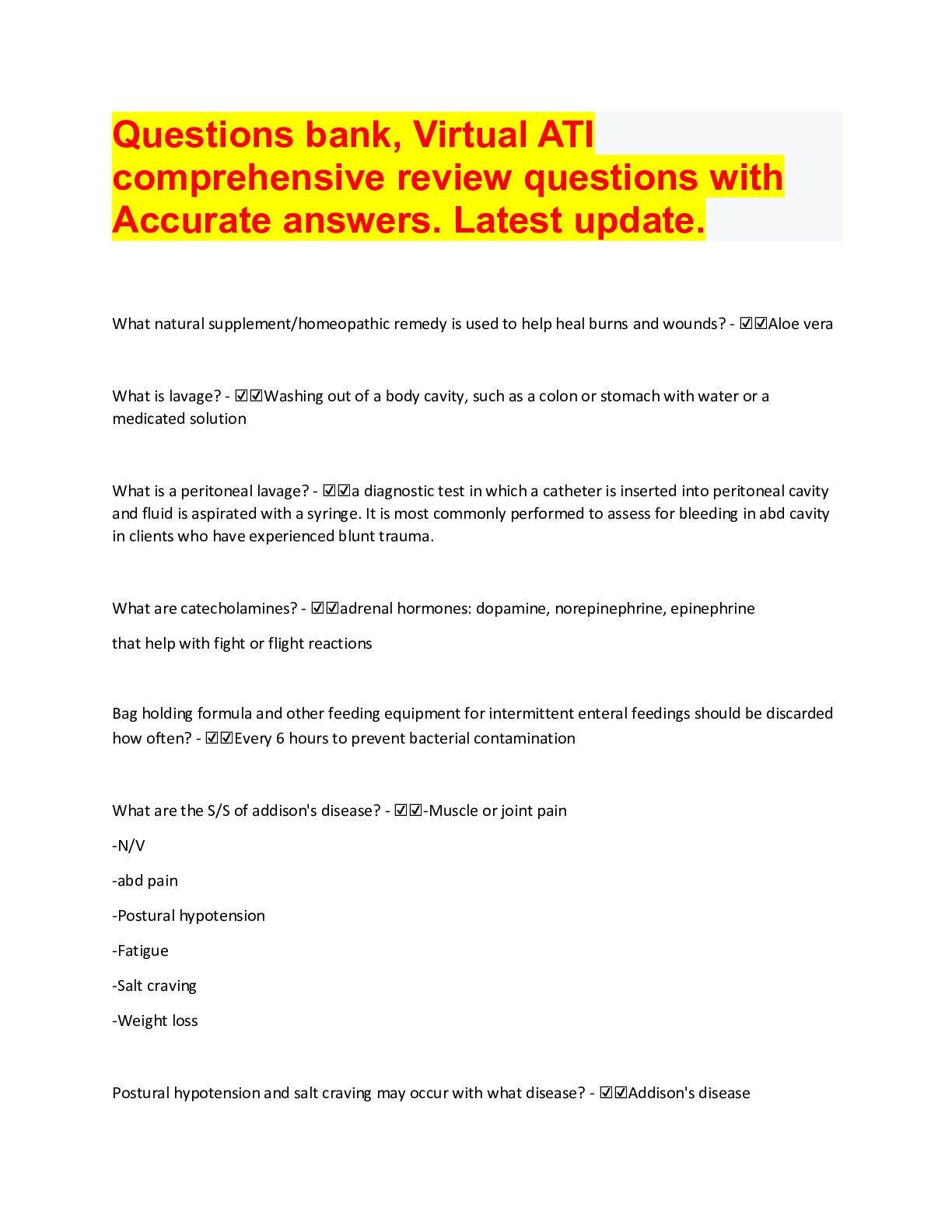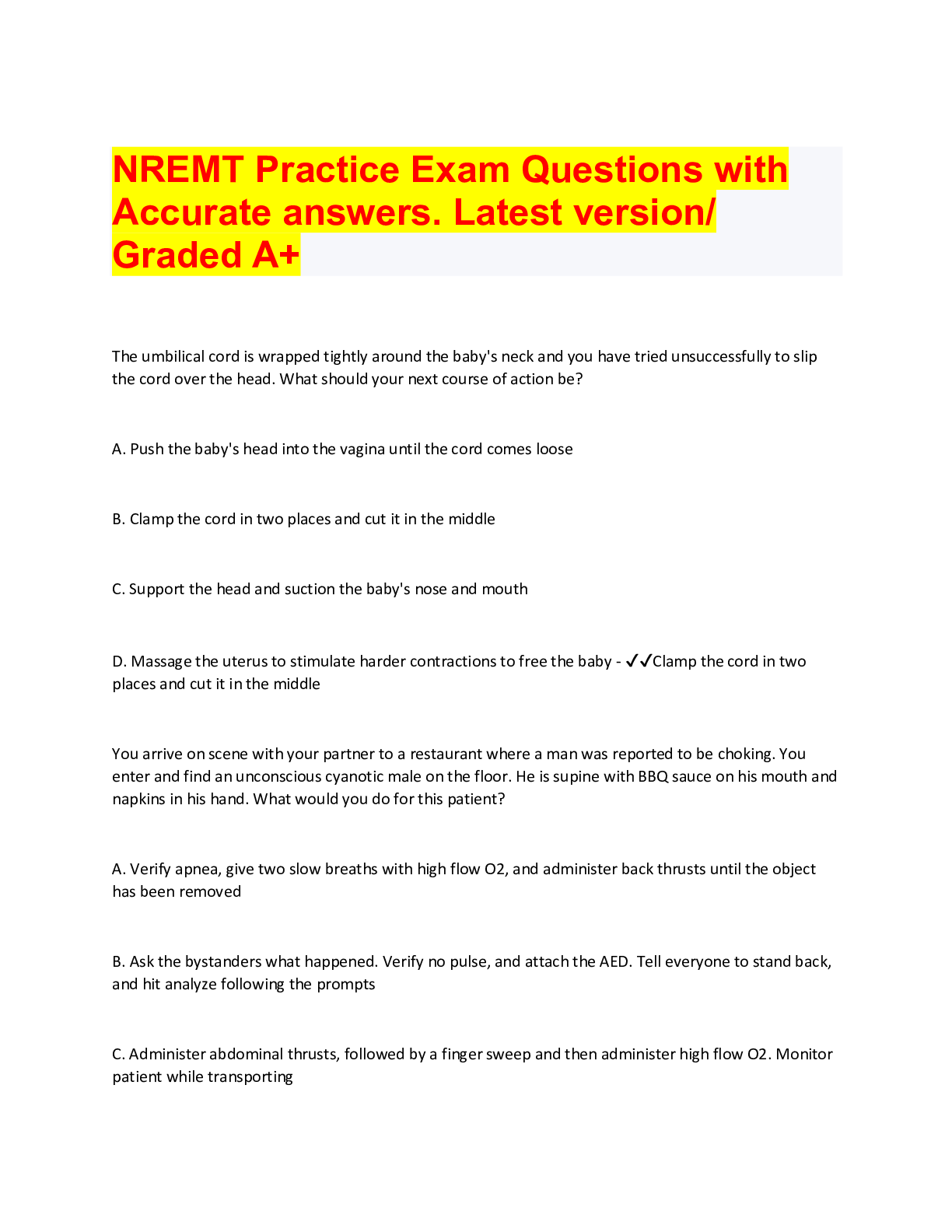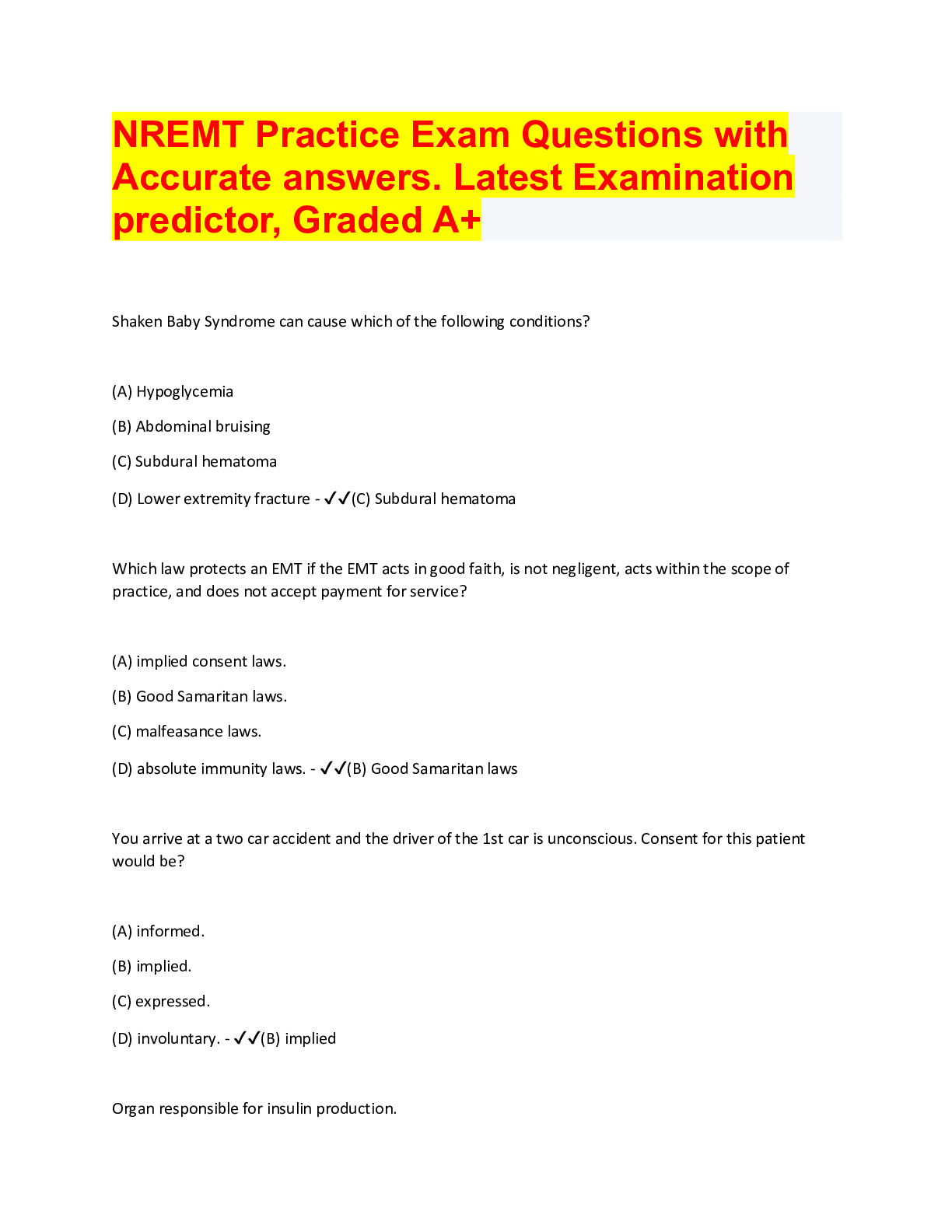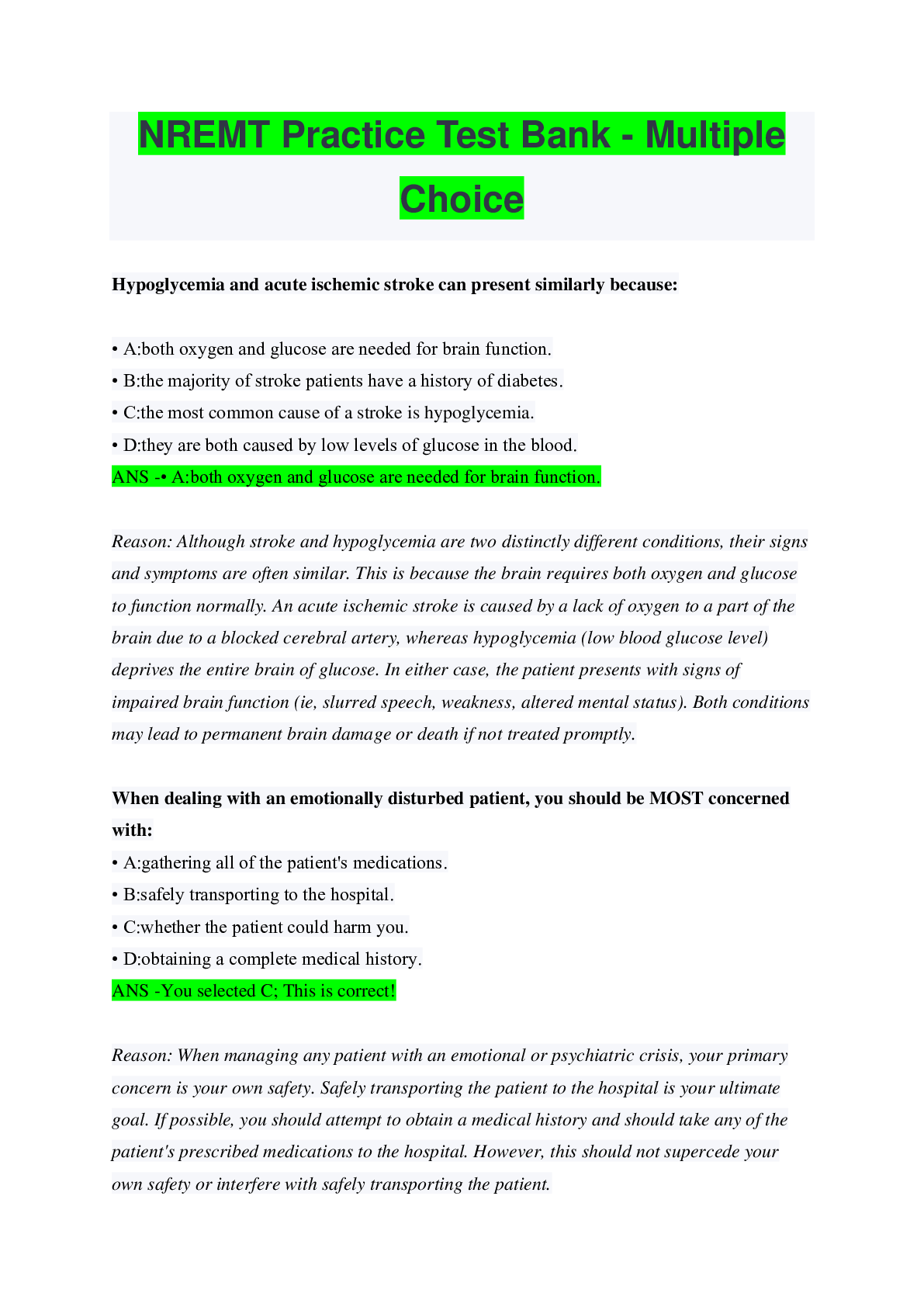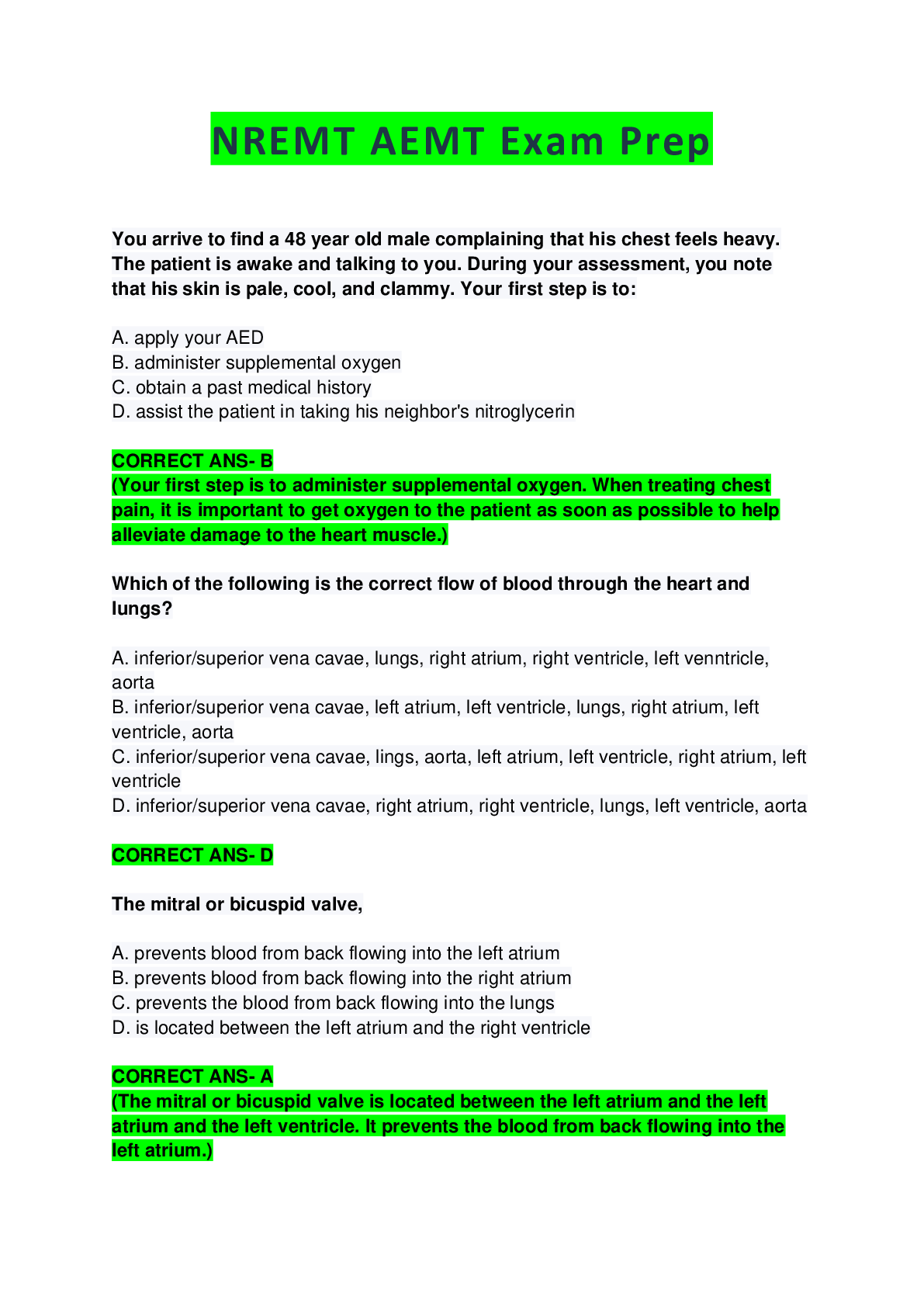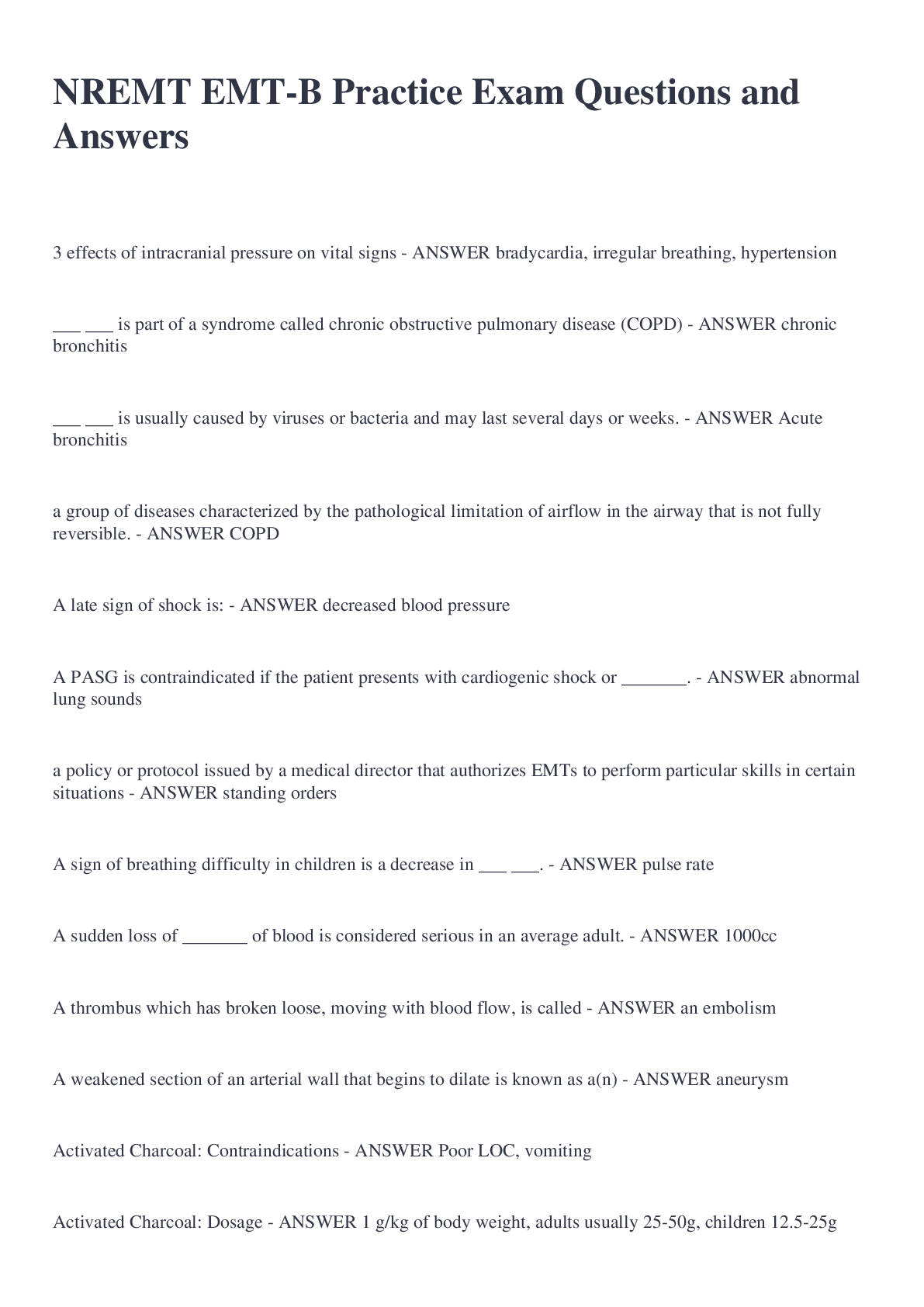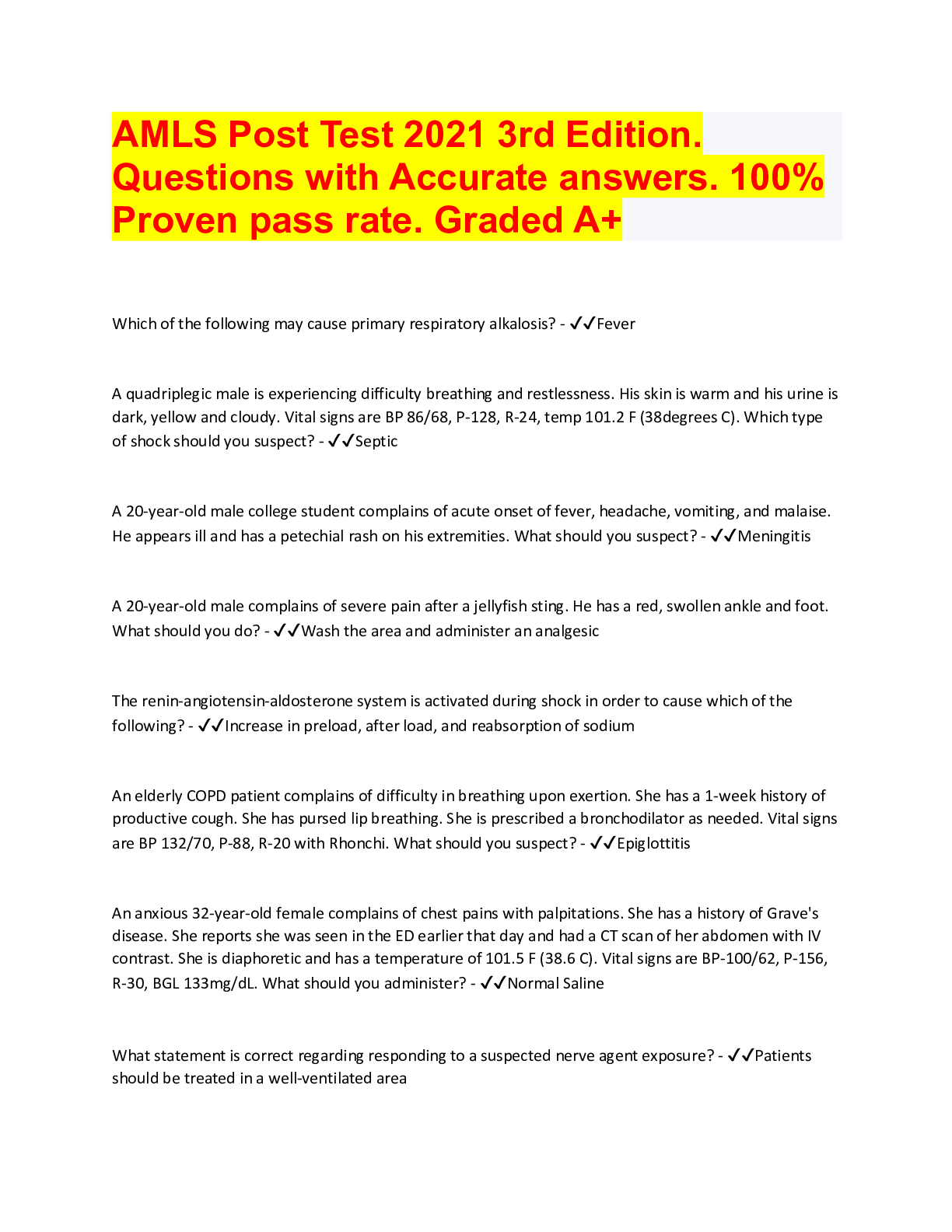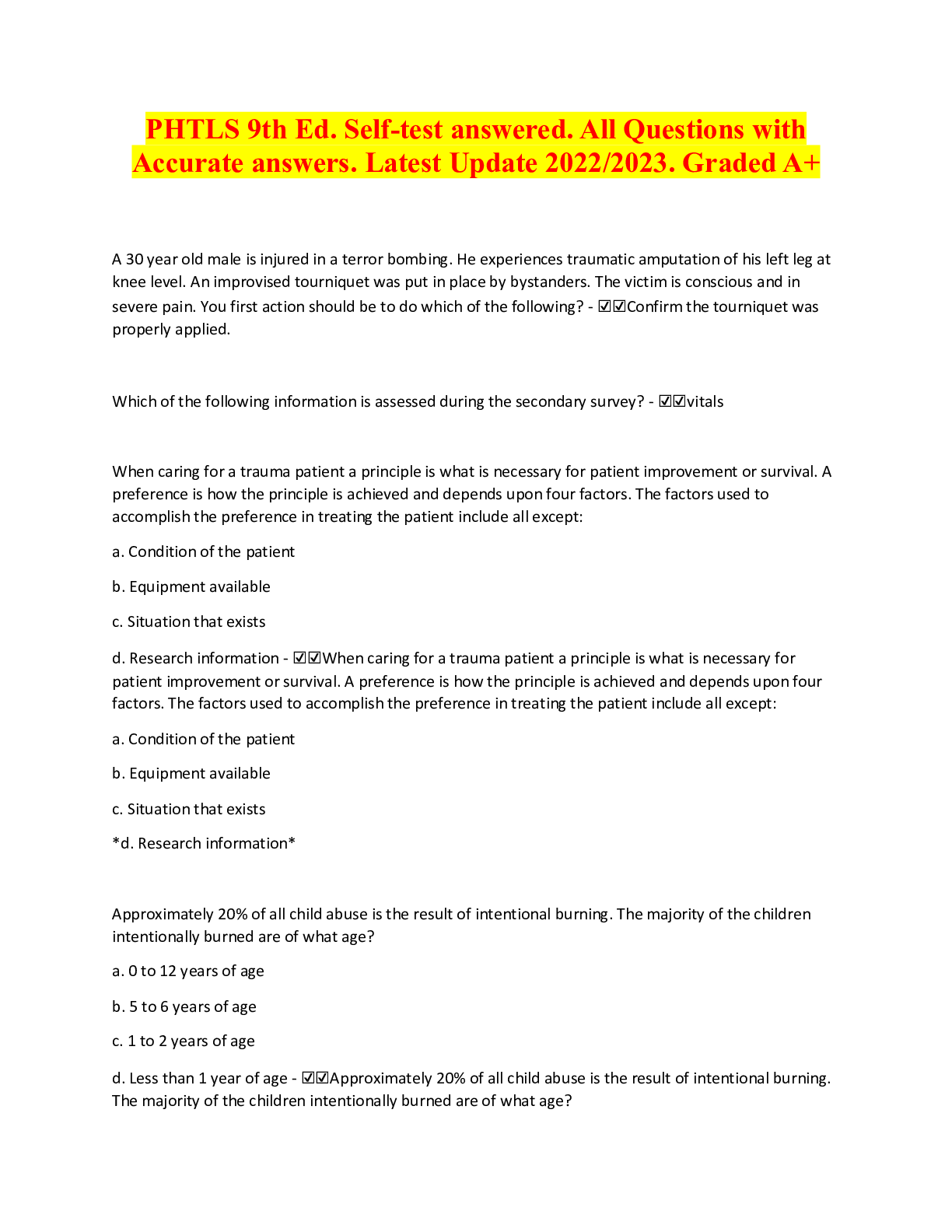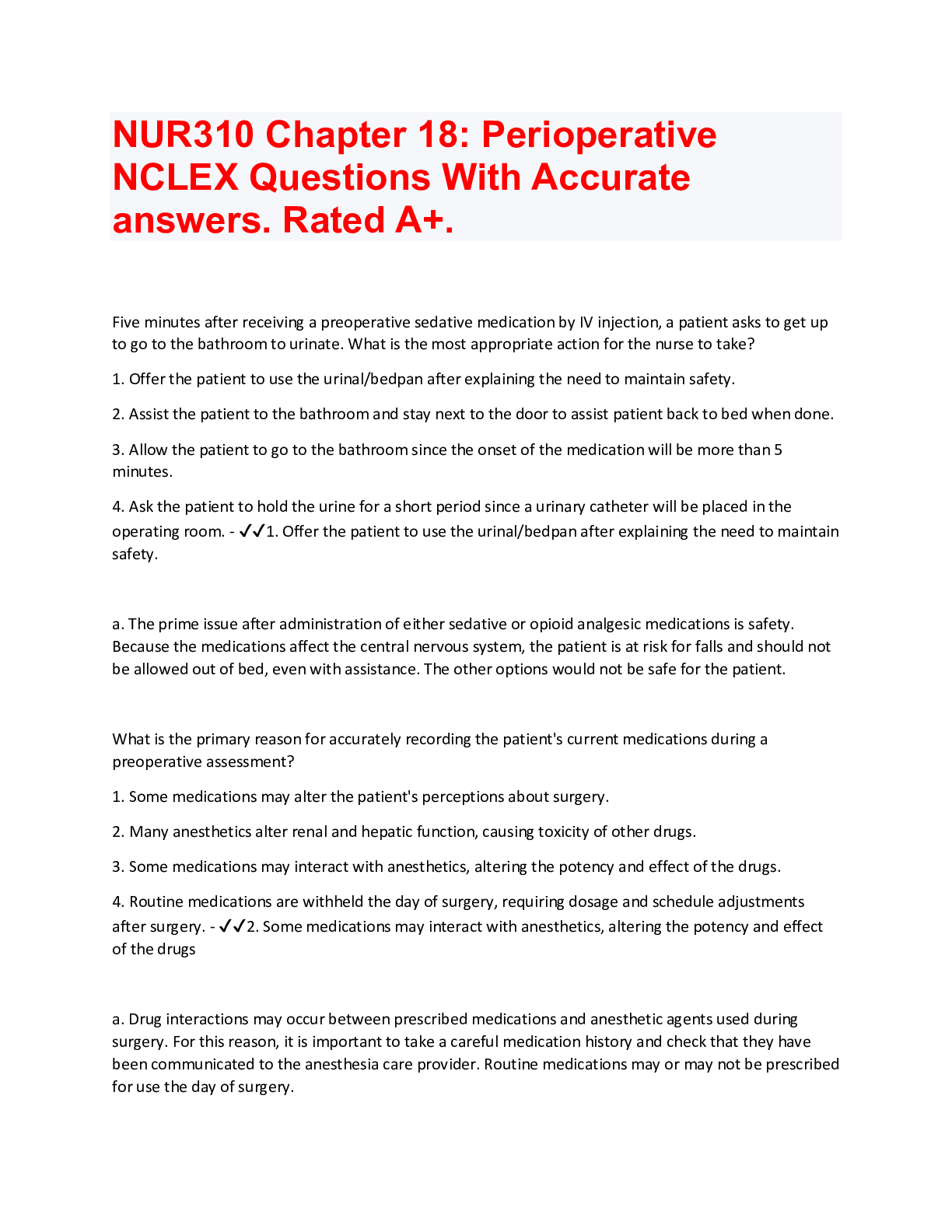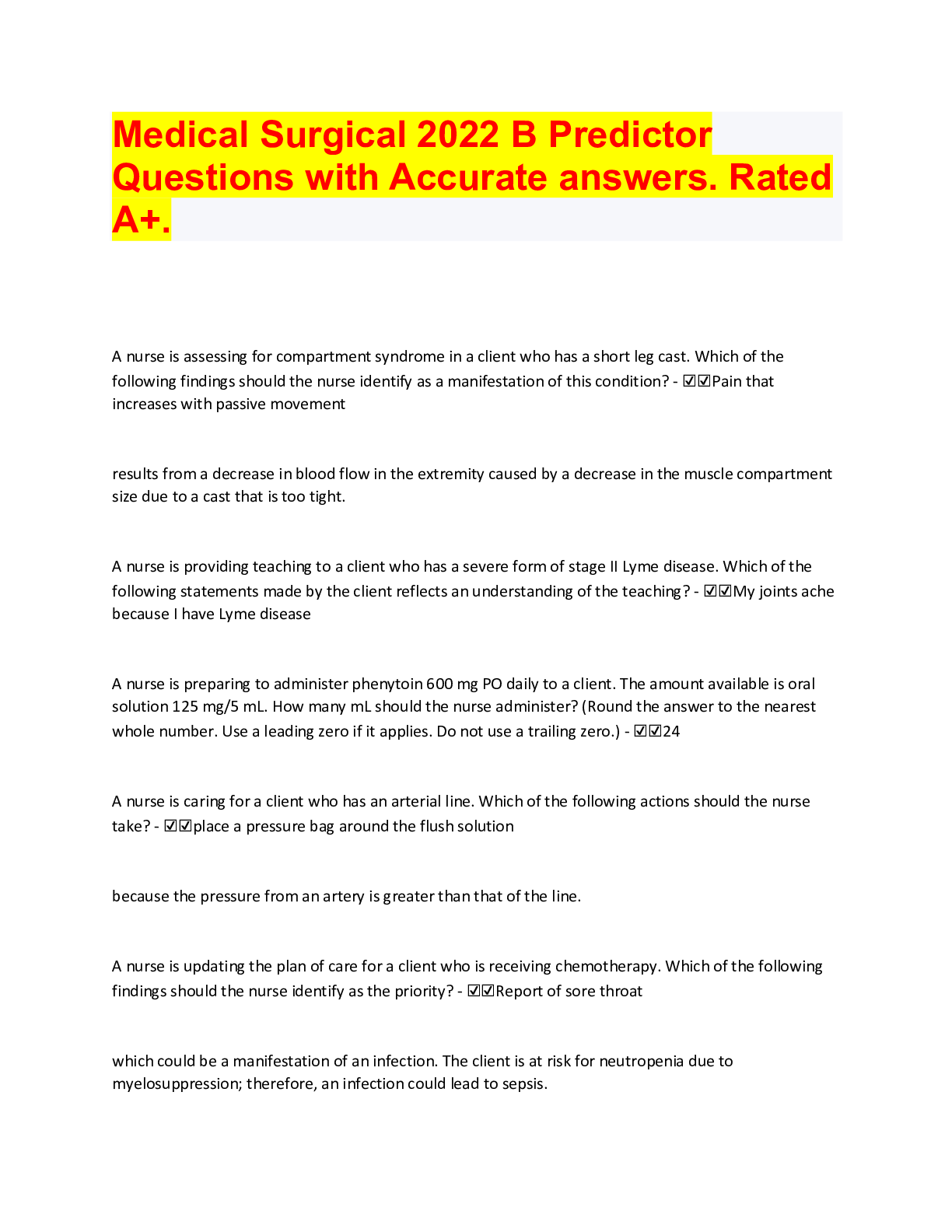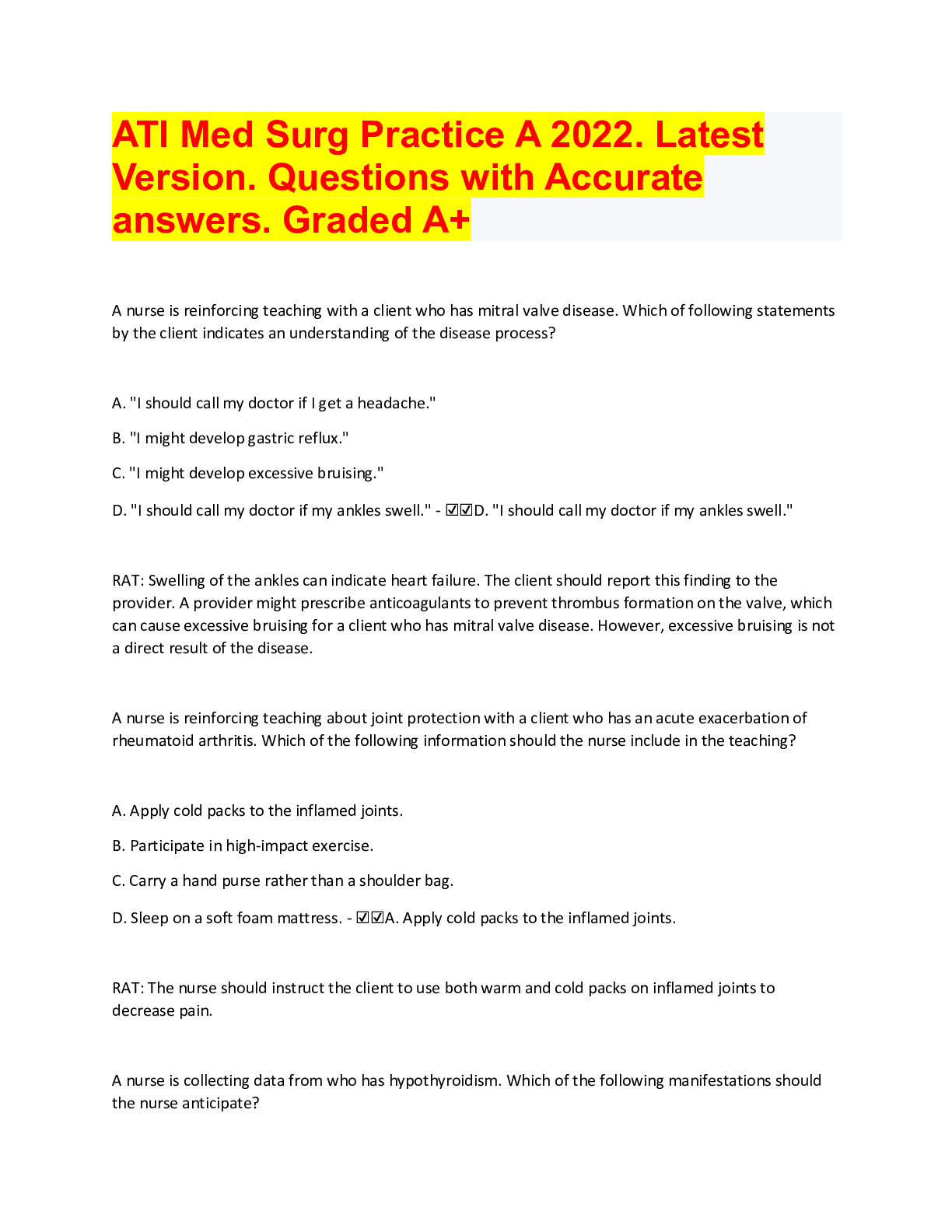*NURSING > QUESTIONS & ANSWERS > AMLS Post Test. All Questions with Accurate answers. Latest 2021/2022 Versions. Rated A+ (All)
AMLS Post Test. All Questions with Accurate answers. Latest 2021/2022 Versions. Rated A+
Document Content and Description Below
. A 45-year-old patient is found supine on the floor. Healthcare providers note pinpoint pupils, shallow respirations, and vomitus in and around the mouth. What course of action should be taken next? ... a. Initiate an IV and administer naloxone b. Supplemental oxygen and suction c. Obtain a blood glucose level d. Begin BVM ventilations - ✔✔b. Supplemental oxygen and suction 2. Patients with a history of COPD that present with an acute onset of shortness of breath are likely to have what condition? a. Pulmonary embolism b. Angina pectoris c. Angioedema d. Hypertensive crisis - ✔✔a. Pulmonary embolism 3. During compensatory shock, the renin-angiotensin-aldosterone system is activated to cause a/an: a. Increase in preload, afterload, and re-absorption of sodium b. Decrease in preload, afterload, and re-absorption of sodium c. Hypotension and bradycardia d. Vasodilation and sodium retention - ✔✔a. Increase in preload, afterload, and re-absorption of sodium 4. What clinical findings are most commonly associated with a pulmonary embolus? a. Clear breath sounds with tachypnea b. Rhonchi auscultated bilaterally with hypercarbia c. Crackles heard in the bases with bradycardia d. Fever, tachycardia, and tachypnea with increased work of breathing - ✔✔a. Clear breath sounds with tachypnea 5. What condition is most likely to cause respiratory acidosis? a. Anxiety/panic attack b. Narcotic overdose c. Methanol ingestion d. Diabetic ketoacidosis - ✔✔b. Narcotic overdose 6. A 55-year-old complains of an 'aching' chest discomfort that persists over several days. The patient has a temperature of 101F (38.3C). Which finding will help narrow the diagnosis to pericarditis? a. Pain is relieved when supine b. Pulsus alternans is present c. S3 gallop is auscultated d. ST-segment elevation in all leads - ✔✔d. ST-segment elevation in all leads 7. Anaphylaxis is most associated with which physiological event? a. Hemorrhage b. Vasodilation c. Bradycardia d. Hypertension - ✔✔b. Vasodilation 8. Acute Respiratory Distress Syndrome (ARDS) is characterized by what pathological change? a. Excessive mucous production b. Inflammation of the visceral pleura c. Breakdown of the alveolar-capillary membrane d. Accumulation of fluid between the pleural layers - ✔✔c. Breakdown of the alveolar-capillary membrane 9. Continuous positive airway pressure would be most beneficial in treating which patient? a. A 43yo with a decreased LOC with respiratory difficulty b. A 22yo with severe asthma who is not responding to nebulizer treatments c. A 38yo with carpal pedal spasms, clear lung sounds, and respirations of 40/min d. A 55yo with jugular vein distension and a BP of 90/60 - ✔✔b. A 22yo with severe asthma who is not responding to nebulizer treatments 10. What is the initial treatment for a patient experiencing hyperosmolar hyperglycemic nonketotic coma (HHNC)? a. Crystalloid IV fluid administration b. Administration of dextrose c. Administration of insulin d. Fluid bolus of 5% dextrose in water (D5W) - ✔✔a. Crystalloid IV fluid administration 11. Your patient has had a seizure secondary to a nerve agent exposure. What medication would be best to diminish the seizure? a. Atropine b. Diphenhydramine c. Midazolam d. Pralidoxime - ✔✔c. Midazolam 12. Respiratory alkalosis may occur as a result of: a. Fever and anxiety b. Renal failure and dehydration c. Airway obstruction and chest wall pain d. Prolonged vomiting - ✔✔a. Fever and anxiety 13. An age-related change that increases the risk of respiratory compromise is: a. Increase of mucus production b. Increase in intrathoracic volume c. Decrease in lung compliance d. Decrease in dead space ventilation - ✔✔c. Decrease in lung compliance 14. Paroxysmal nocturnal dyspnea is most common in patients with a history of: a. Left-sided heart failure b. Pneumonia c. Asthma d. Multiple sclerosis - ✔✔a. Left-sided heart failure (?) 15. The patient presents with a history of fever and an upper respiratory infection. Historical information reveals increasing water intake, orthostatic hypotension, and an increase in urination. You suspect these symptoms are caused by: a. Hyperglycemia b. Hypoglycemia c. Hypokalemia d. Respiratory acidosis - ✔✔a. Hyperglycemia 16. You are dispatched to the home of a 32yo patient with a history of Graves' disease. The patient was in the ER earlier today for some "tests for my ulcers." He received contrast and [Show More]
Last updated: 1 year ago
Preview 1 out of 15 pages

Reviews( 0 )
Document information
Connected school, study & course
About the document
Uploaded On
Aug 12, 2022
Number of pages
15
Written in
Additional information
This document has been written for:
Uploaded
Aug 12, 2022
Downloads
0
Views
98














